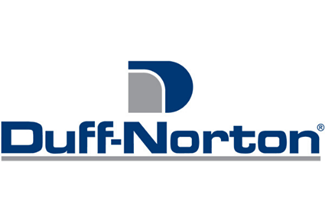Most people don’t know how dangerous grain dust can be. The reality is, without the right equipment, grain processing can lead to disastrous, even explosive consequences.
Yet some grain handlers and their management fail to dedicate time and resources to preventing incidents from occurring and reducing the risk. Here’s why you need to ensure your equipment is classified correctly to avoid a disaster.
A little background
Grain handling refers to the process of collecting and storing large amounts of grain. The process consists of various heavy-duty machines, large amounts of force, extreme temperatures and lots of dust. Without the right control systems in place, grain handling can:
- Lead to worker accidents
- Create explosions and fires
- Cause grain wastage
There are three elements needed for a grain explosion to occur. First, there must be grain dust. Second, there must be a confined space. Leg casings and even certain parts of an upright elevator are confined enough to cause an explosion. Third, there must be a spark or heat source to ignite the fuel.
Often, grain dust explosions occur within the bucket elevator or leg. As grain flows into an elevator, a heated bearing or a spark can be produced inside the leg and a primary explosion occurs. From there, grain dust acts as kindling and the situation gets dangerous, fast.
How to reduce your risk
First and foremost, operators must make sure spaces are regularly checked and cleaned. In many cases, farmers will coat grain in food-grade mineral oil to minimize the amount of dust and decrease risk of explosion. This reduces the need to clean elevators regularly and control equipment – such as cyclones and dust collectors – isn’t relied on as much.
Secondly, equipment with the possibility of exposure to hazardous materials must meet the specific classification, division and group requirements to safely operate in the hazardous environment.
Understanding class
Class defines the general nature of the hazardous material that electrical equipment will be exposed to. The three classifications are:
|
Class one
|
Hazardous because flammable gases or vapors may be present in quantities sufficient to produce explosive or ignitable mixtures.
|
|
Class two
|
Hazardous because combustible or conductive dusts may be present in quantities sufficient to produce explosive or ignitable mixtures.
|
|
Class three
|
Hazardous because ignitable fibers or flyings
|
Understanding division
Division is the probability of the hazardous material igniting based on its concentration. The two divisions are:
|
Division 1
|
The substance referred to by class has a high probability of producing an explosive or ignitable mixture due to it being present continuously, intermittently, or periodically or from
the equipment itself under normal operating conditions.
|
|
Division 2
|
The substance referred to by class has a low probability of producing an explosive or ignitable mixture and is present only during abnormal conditions for a short period of time – such as a container failure or system breakdown.
|
Understanding group
Group defines the type of hazardous material present. The seven group types are:
|
Group A
|
Atmosphere containing acetylene.
|
|
Group B
|
Atmosphere containing a flammable gas, a flammable liquid produced vapor, or a combustible liquid produced vapor mixed with air that may burn or explode.
|
|
Group C
|
Atmosphere containing a flammable gas, a flammable liquid produced vapor or a combustible liquid produced vapor whose MESG is greater than 0.75 mm or MIC ratio is greater than 0.40 and less than 0.80.
|
|
Group D
|
Atmosphere containing flammable gas, flammable liquid produced vapor, or combustible liquid produced vapor mixed with air that may burn or explode, having either a MESG value greater than 0.75 mm or a MIC ratio greater than 0.80.
|
|
Group E
|
Atmosphere containing combustible metal dusts, including aluminum, magnesium and their commercial alloys or other combustible dusts whose particle size, abrasiveness and conductivity present similar hazards in connection with electrical equipment.
|
|
Group F
|
Atmosphere containing carbonaceous dusts, carbon black, coal black, charcoal, coal or coke dusts that have more than 8 percent total entrapped volatiles or dusts.
|
|
Group G
|
Atmosphere containing combustible dust not included in Group E & F – such as flour, grain, starch, sugar, wood, plastics and chemicals.
|
SuperCylinders built for hazardous conditions
Here at Duff-Norton, we offer a variety of SuperCylinders with motors and limit switches that meet the necessary class, group and division standards needed to operate in hazardous conditions.
We have motors available for class one (gases and vapors) group D and class two (dust) group F and G environments.
We also have limit switches available in:
- NEMA 7, for use in class one, group D locations; and
- NEMA 9, for use in class two, groups E, F and G locations.
Our SuperCylinder series also uses a precision-guided translating tube system to broaden application capabilities which allows stroke lengths far greater than normally possible.
Customization with Duff-Norton
We adopt a modular concept that lets us configure any number of possibilities for our SuperCylinders. The selection of available gear ratios is unmatched by any similar product and, as a result, we can apply many additional motor and ratio options to meet specific capacity, speed or lift requirements. For example:
- Speeds up to 379 in/min
- Capacities up to 50,000 lbs
- Strokes up to 161 inches
- Ball Screw or Acme Screw
- Clevis mounting or Trunnion mounting
- Aluminum Bronze Worm gears (SCW Series)
- Continuous Duty Ratings (SCN Series)
- Low power Requirements (SCN Series)
- Helical & helical Bevel gears (SCN Series)
To find out more about how we can help you find a product that’s safe to operate in hazardous conditions like grain processing, get in touch with us.
Contact Our Engineering Team For A Free Application Analysis
North America - EN









